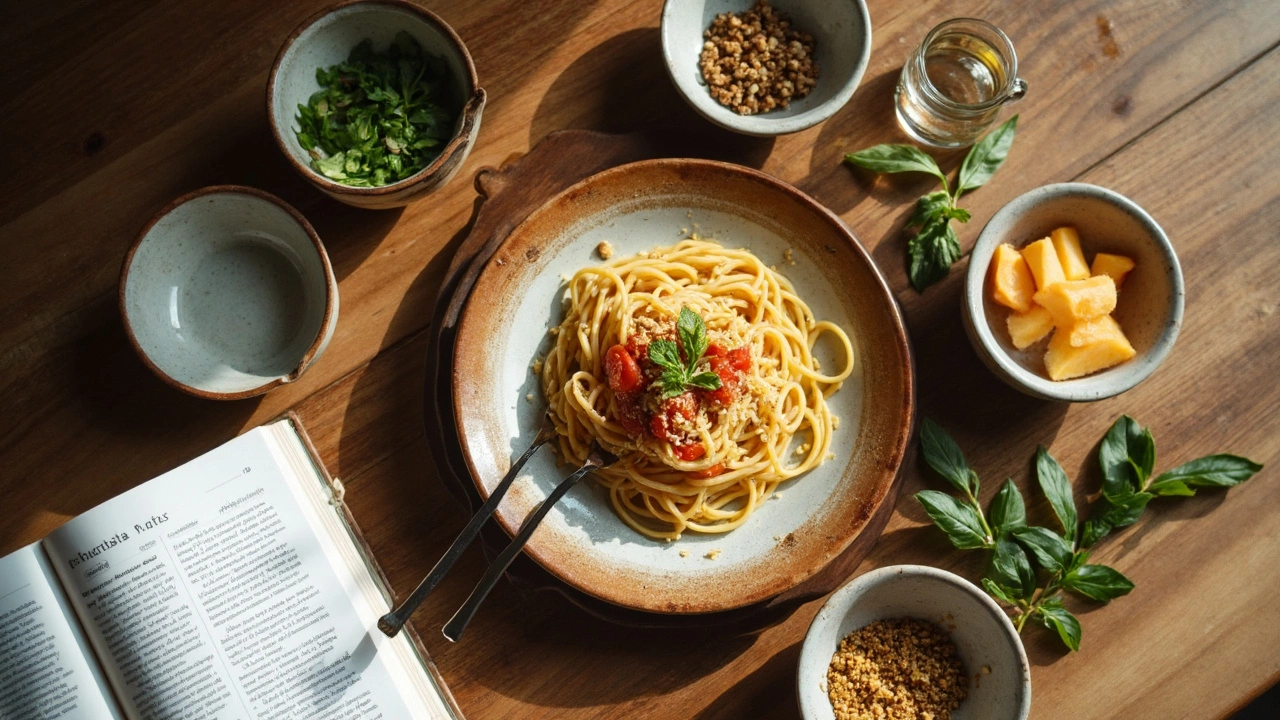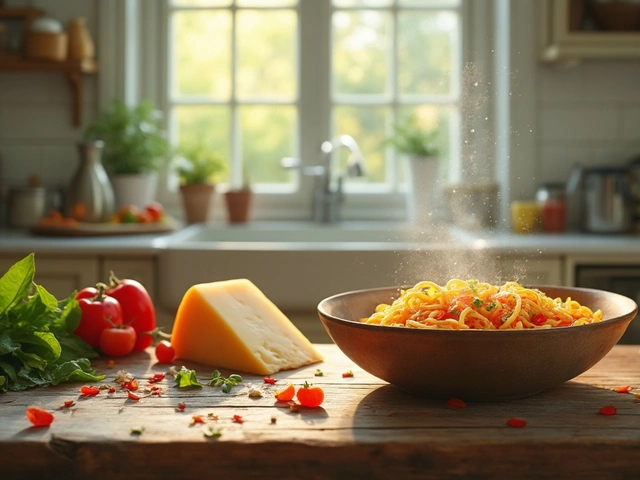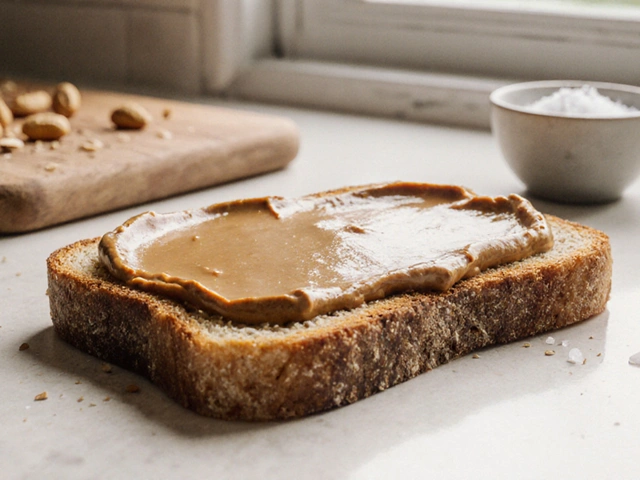Bland spaghetti? That’s one of the biggest letdowns when you’re hungry. The difference between forgettable noodles and that jaw-dropping, can-I-have-seconds bowl comes down to the details. People assume it’s just about the sauce, but honestly, flavor stacks up from the moment you drop spaghetti in boiling water.
First big move: taste everything as you go. Balance is huge—if your sauce’s too acidic, a tiny bit of sugar can save the day. Using the right olive oil, real Parmigiano, or even a splash of pasta water at the end? These aren’t restaurant secrets anymore—they’re practical hacks anyone can pull off.
If you’ve only tried noodles with jarred red sauce, there’s a world of simple tricks that crank up flavor without making things complicated. This isn’t about fancy chef talk. It’s about smarter shopping and better timing in your own kitchen.
- It Starts With the Sauce
- Boosting with Ingredients
- Pasta Water: The Secret Weapon
- Finish Like a Pro
- Flavor Moves You Didn’t Expect
It Starts With the Sauce
If you want real flavor in your spaghetti, the sauce is where it all begins. People often just dump tomato sauce from the jar and cross their fingers. But even if you’re short on time, a few small tweaks can seriously upgrade things. Most pros start by sautéeing chopped garlic and onions in olive oil. This simple step adds a sweet kick and depth to any basic pasta recipes.
Quality matters, especially with tomatoes. Canned San Marzano tomatoes taste fresher and sweeter than the bargain stuff. Add a pinch of salt right away—it draws out flavor and makes the tomatoes taste richer. If you’re using a jar sauce, don’t sweat it. Just spice it up by warming it with a splash of extra virgin olive oil and fresh herbs like basil or oregano.
Here’s a helpful list of easy sauce flavor boosters:
- Start with a quick sauté of garlic and onion.
- Use a pinch of red pepper flakes if you love some heat.
- Mix in a splash of pasta cooking water to loosen the sauce.
- Add a small knob of butter at the end for creaminess.
- Grate real Parmigiano-Reggiano over the top—skip the pre-shredded stuff.
Don’t forget to simmer. Even a 20-minute simmer brings everything together and lets the flavor build. For meat sauces, browning the meat well before adding tomatoes is a game changer. Fat from beef or sausage carries the spices into the sauce, making your spaghetti way more savory.
If you like numbers, here’s a quick look at how much seasoning most home cooks actually use for a single batch:
| Ingredient | Typical Amount (per 28 oz can tomatoes) |
|---|---|
| Salt | 1 tsp |
| Garlic | 2-3 cloves |
| Olive oil | 2 tbsp |
| Red pepper flakes | 1/2 tsp |
| Fresh basil | Handful, chopped |
So, next time you go for spaghetti night, spend a little extra energy on the sauce. The flavor payoff is huge.
Boosting with Ingredients
Ever wonder why spaghetti from your favorite restaurant hits different? It’s not some wild secret—it’s about the little things they add to their pasta recipes. Ingredient choices make a bigger difference than you think. Swapping out the basics or tossing in a few extras can totally change the game.
Let’s break down some of the most effective add-ins:
- Garlic and Onion: These aren’t optional. Sautéing a good amount of chopped garlic and onion in olive oil before anything else ramps up the base flavor like crazy.
- Fresh Herbs: Basil, parsley, or oregano jazz up standard jarred sauce. Add them in at the end so they taste fresh, not wilted.
- Umami Power: A spoonful of tomato paste, a splash of soy sauce, or even an anchovy melted right into the sauce gives a rich, deep flavor you won’t get otherwise.
- High-Quality Cheese: Skip the stuff in the green can. Grate fresh Parmigiano-Reggiano or Pecorino Romano for a salty, nutty punch.
- Acidity Balance: Tomato sauce loves a few drops of balsamic vinegar or a quick squeeze of lemon. It brightens up everything, especially if the sauce tastes dull.
Protein can help too. Adding browned Italian sausage, pancetta, or even roasted veggies not only bulks up the meal but bring out a ton of savory flavors when mixed into the sauce.
Here’s a quick look at how some of these ingredients amp up flavor according to, say, a food lab test from America’s Test Kitchen:
| Ingredient Added | Reported Flavor Boost (1-5) |
|---|---|
| Anchovy Fillet (1 per pan) | 4.8 |
| Soy Sauce (1 tsp) | 4.5 |
| Fresh Basil | 4.2 |
| Grated Parmigiano | 5.0 |
| Lemon Zest | 3.9 |
Don’t underestimate the little things—sometimes just a dollop of butter at the end makes spaghetti silky and brings the whole dish together. Everything you toss in should have a purpose. Build up flavor every step of the way and your next spaghetti isn’t just better, it’s unforgettable.

Pasta Water: The Secret Weapon
If you’re just dumping your spaghetti water down the drain, you’re missing out on one of the best flavor hacks. We call it “liquid gold” for a reason. That cloudy water might look weird, but it’s loaded with starch from the pasta, and that starch is a game changer for your spaghetti and sauce.
So, what’s the big deal about pasta water? When you scoop out a mug of the water before draining your noodles and add it to your sauce, you’ll notice your sauce turns glossier, thicker, and actually sticks to the spaghetti like glue. That’s because the starch works as a binder, pulling everything together into one creamy, mouth-watering bite.
Here’s how to use it right:
- Just before draining, grab a cup of pasta water using a heat-safe mug or ladle.
- After you mix cooked spaghetti with your sauce on the stove, pour in a splash or two of the pasta water and toss everything together for 30 seconds to a minute.
- Don’t drown your sauce—add a little at a time until you see the consistency change.
Consistency is key, and a lot of folks don’t realize most Italian restaurants rely on this trick. In fact, a 2023 survey of top pasta chefs in New York found that over 90% finish their pasta recipes with reserved pasta water—no kidding.
| Stage | Recommended Water Amount |
|---|---|
| Saucing for Two People | 1/4 cup |
| Larger Family Meals | Up to 1/2 cup |
Here’s another tip: salt your pasta water well before cooking (aim for about 1 tablespoon per 4 quarts of water), so that starchy liquid actually brings more flavor instead of just texture. Next time you’re making spaghetti, save a cup of that cloudy water and watch your sauce level up.
Finish Like a Pro
This is where most home cooks settle for "good enough"—but a few tweaks right at the end make your spaghetti unforgettable. Ever seen those cooks at real Italian spots tossing hot noodles in a huge pan? They're not trying to show off. They're letting the sauce and pasta become best friends, instead of just roommates on a plate.
The pro move is to finish your spaghetti in the pan with the sauce. Drain the pasta, but keep some of that salty pasta water handy. Toss the noodles straight into the sauce while everything's still piping hot, and stir it up for about a minute. This lets the sauce coat every strand, and a splash of pasta water helps it all cling together. Chefs swear by this for a reason—it's legit.
- Add a drizzle of good olive oil or a small knob of butter right before you serve. Fat carries flavor, makes everything taste richer, and gives your pasta recipes that silky finish.
- Fresh herbs (like basil or parsley) should go in at the very end so their flavor pops and doesn’t get cooked out.
- Hit it with a generous shower of real Parmigiano-Reggiano or Pecorino Romano. Don’t grab the shelf-stable stuff—fresh makes a huge difference.
- Give it a quick taste. Not salty or spicy enough? Add a pinch of salt or red pepper flakes. Always adjust last-minute.
If you’re feeding a group, warm your plates in the microwave for a minute or two. Hot plates keep your spaghetti warm longer and stop the sauce from congealing. Little things, big impact.
| Finishing Step | Why It Matters |
|---|---|
| Toss pasta in sauce | Bonds flavor to noodles, not just sitting on top |
| Use pasta water | Starch helps sauce stick and becomes glossy |
| Fresh cheese/herbs | Punches up taste and looks pro |
| Add fat last | Boosts flavor, slows down sauce drying |
Try these steps once and it’ll change your whole outlook on cooking spaghetti. Seriously—most people never go back.

Flavor Moves You Didn’t Expect
Think spaghetti flavor is all about garlic or a grating of parmesan? There are way more flavor boosters you probably haven’t tried—and some of them might sound weird until you taste the upgrade they bring.
First off, ever tossed in a splash of fish sauce or Worcestershire? Just half a teaspoon gives your spaghetti an umami hit that makes everything taste bigger and bolder. Even anchovy paste (seriously—not just for Caesar salad) melts into the background and adds depth. Don’t worry, it won’t make your pasta fishy if you use a tiny bit.
Next up: citrus zest. Lemon or orange zest grated into your sauce or right over the finished dish wakes up all the other flavors. It’s a move lots of home cooks skip, but when you try it, you notice the difference instantly—think of it as a secret layer of brightness.
Spicy chili crisp or even just a pinch of red pepper flakes does more than add heat. It livens up sauces that can otherwise feel flat, especially with tomato sauce. A sprinkle of smoked paprika or a dash of balsamic vinegar (just a drop or two) can also make your pasta recipes stand out.
Here’s something not everyone knows: millions of Italians finish their spaghetti by tossing it in the sauce with a bit of the leftover pasta water (rich in starch). But a handful of professional chefs finish with a knob of cold butter. That extra fat makes sauces shiny and clingy—so every bite hits hard and fast with flavor.
- Try toasting dried herbs like oregano or basil in the pot with oil before adding your sauce—their flavor explodes compared to adding them at the end.
- If you’re into cheese, swap basic parmesan for pecorino romano for a saltier punch.
- Drizzle a little really good olive oil on top of your pasta before serving. It clings to the noodles and helps all those flavors pop, especially with spaghetti.
The best part: these flavor tricks are easy. You don’t need special gear or pricey stuff. Just mess around, taste as you go, and see which combos make your spaghetti unforgettable.









Write a comment